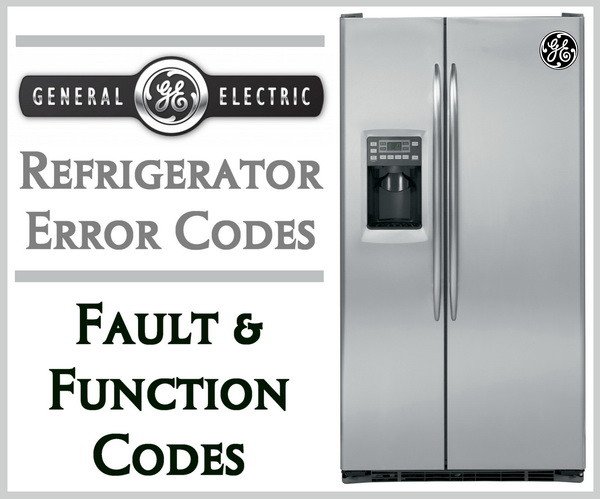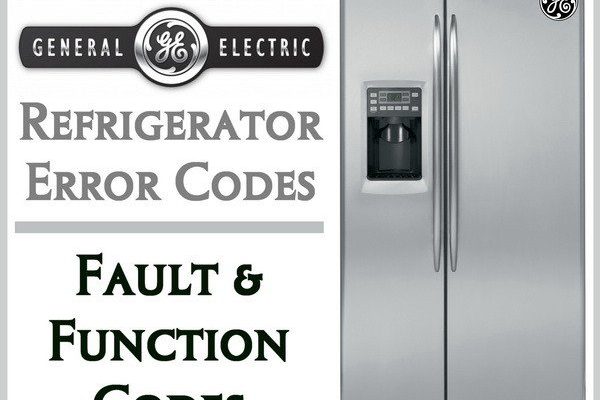
First off, seeing an F2 error code isn’t the end of the world. Think of it like a check engine light in your car. It’s a signal that something needs attention, not a sign that your fridge is about to give up the ghost. GE refrigerators use these codes to effectively communicate what might be going wrong, making it easier for you to address the issue and ensure your fridge keeps running smoothly.
Understanding the GE Refrigerator F2 Error Code
The F2 error code on a GE refrigerator typically indicates a problem with the refrigerator’s fan or the temperature control system. Imagine your refrigerator’s fan as the heart of the cooling process—just like you need to circulate air in a room to keep it cool, your fridge’s fan circulates cold air to maintain the temperature. When this fan encounters a problem, the F2 code appears on your display to grab your attention.
This error can be caused by various issues. It could be that the fan motor is failing, much like a ceiling fan that stops spinning efficiently because of a bad motor. Alternatively, it might stem from issues with the control board that tells the fan when to operate. In some instances, it could be as simple as an obstruction blocking the fan blades. Regardless, your refrigerator is essentially saying, “Hey, I need a little help here to keep things cool.”
You might wonder why this error is crucial. Well, if the fan isn’t working correctly, your refrigerator can’t circulate air properly, leading to warmer temperatures inside. This can compromise the safety of your stored food and drinks. You wouldn’t want your milk to spoil or your veggies to wilt, would you? So, promptly addressing the F2 error is important to maintain the appliance’s performance and your peace of mind.
Identifying Common Causes of the F2 Error
Now that you know what the F2 code means, let’s dive into some common causes. As mentioned earlier, a failing fan motor is a top culprit. Over time, components can wear down, much like any mechanical device. If your fan motor sounds noisier than usual or stops altogether, it might be signaling that it’s time for a replacement.
Another possible cause is a problem with the refrigerator’s electronic control board. Think of this board as the brain that coordinates the appliance’s operations, including temperature regulation and fan activity. If the control board is faulty, it might not send the right signals to the fan, causing the F2 error to appear. A professional can usually diagnose this issue by running specific tests.
Sometimes, the issue is surprisingly simple: an obstruction. Items stored too close to the fan can block airflow, overworking the motor or preventing it from spinning efficiently. It’s like when you put too much in a suitcase and struggle to zip it up. Make sure your fan has breathing room. Reorganize items in your fridge to ensure nothing’s in the way.
How to Troubleshoot and Fix the F2 Error
So, what do you do if you encounter this error? It’s time for a little detective work. First, open up the refrigerator and listen carefully. If the fan isn’t running, that’s your first clue. Carefully inspect around the fan for any obstructions. Unearth anything in its path, much like digging out a blocked drain. Once cleared, see if the fan begins rotating freely.
If the fan isn’t the issue, consider the control board. This task usually requires a service professional, unless you’re particularly handy with electronics. They will test the board and fan motor to determine which component needs replacing. Sometimes a simple reset can clear minor glitches—unplugging your refrigerator for a few minutes and plugging it back in might do the trick.
For persistent issues, contacting GE customer support or a certified technician is a wise move. Doing so ensures the problem is accurately diagnosed and fixed without causing further damage. Remember, it’s okay not to tackle everything on your own; experts are there for a reason and can save you from unnecessary stress and food spoilage.
Preventing Future F2 Errors
Hey, guess what? There are preventative steps you can take to ward off future F2 error codes. Regularly check the airflow inside your fridge. Make sure it’s not crammed full, obstructing the fan, or pushing the fridge to work harder than necessary. Consider it like maintaining a balanced diet; moderation is key to keeping things running smoothly.
Keep your refrigerator clean—and not just the outside or what meets the eye. Every so often, clean the coils and check the fan area to ensure there are no dust bunnies or debris nesting there. These simple actions can make a world of difference in your refrigerator’s longevity.
Lastly, being gentle when loading and unloading items goes a long way. Avoid overstuffing and treat your refrigerator like a partner in your kitchen endeavors. Pay attention to unusual noises or changes in performance—your fridge often whispers before it yells.
In conclusion, while an F2 error code might seem alarming initially, it’s manageable with a bit of attention and care. By understanding the underlying causes and taking proactive steps to maintain your refrigerator, you’ll keep your cool—literally—and extend the life of your trusty appliance.
